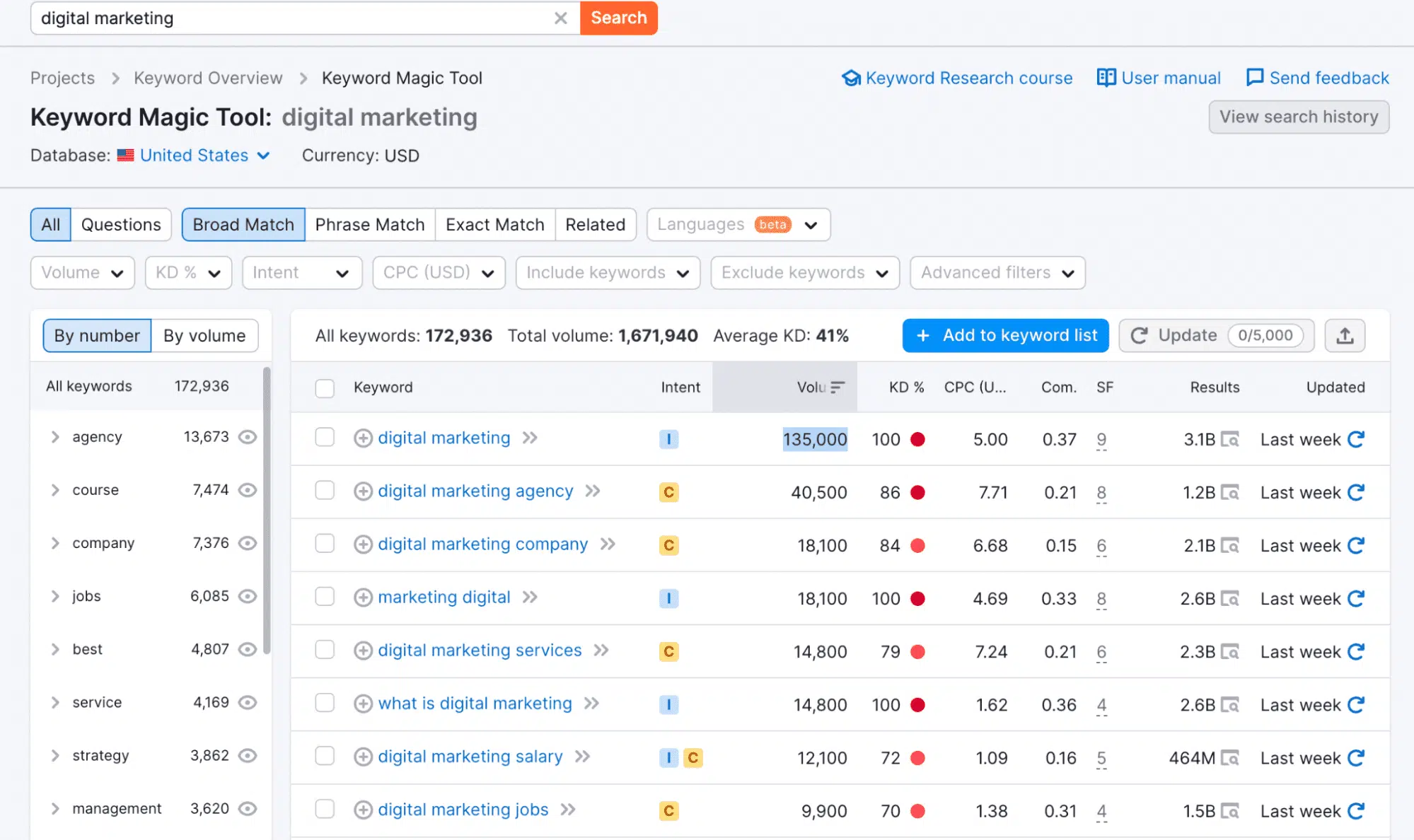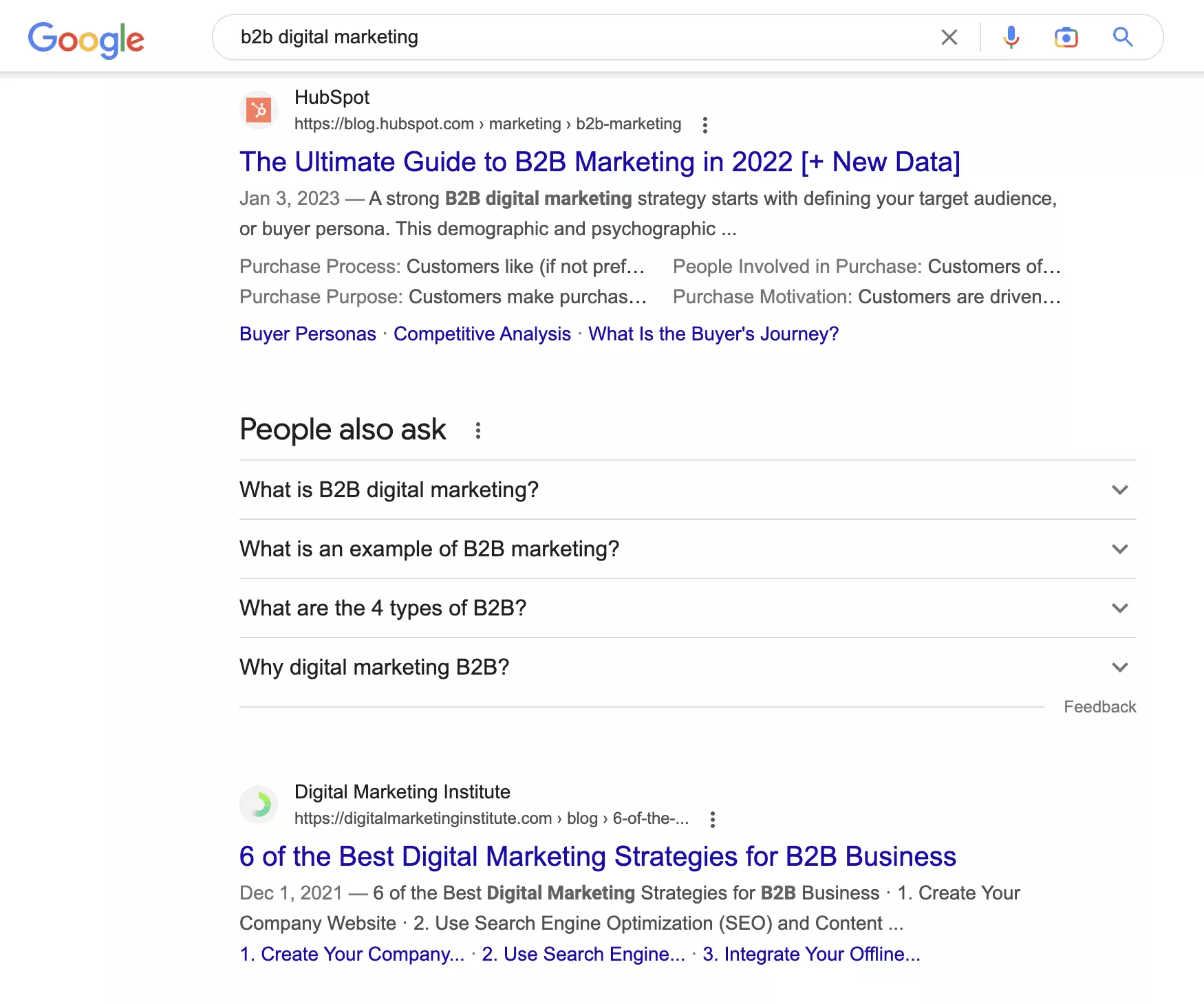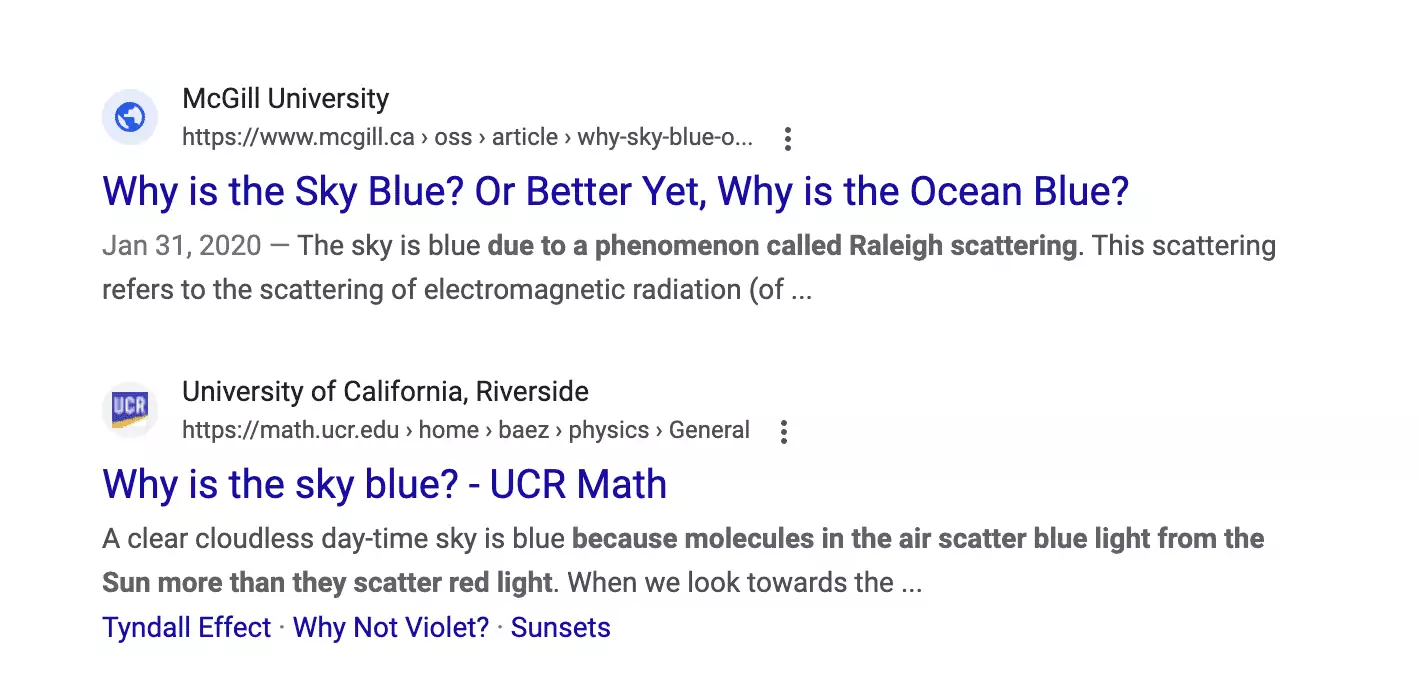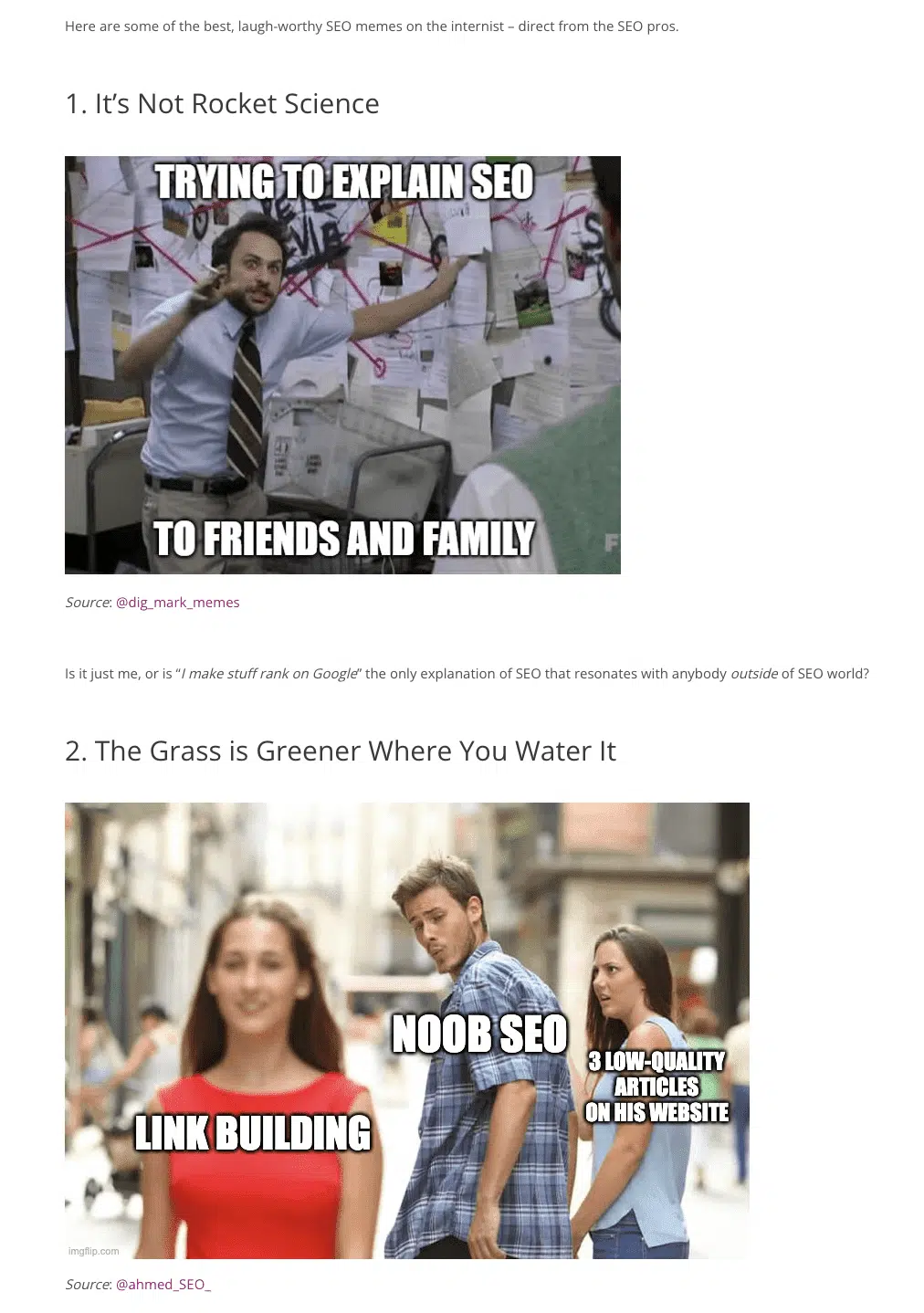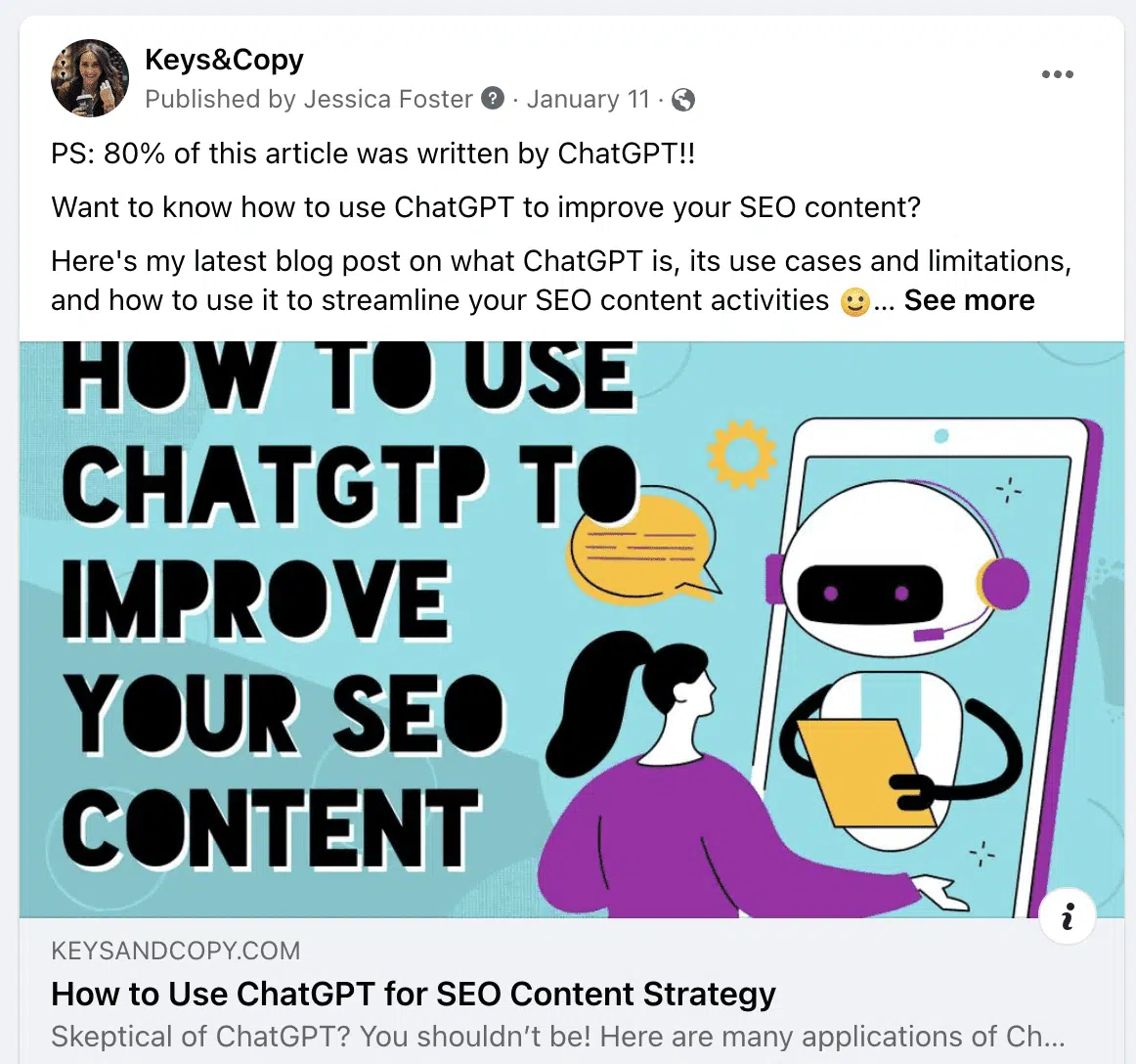If you’re at all familiar with Search Engine Optimization (SEO), then you’ve likely heard of “SEO writing”.
Otherwise described as “writing for SEO”, SEO writing is the process of writing optimized content that ranks high in search engines (namely, Google).
Not only does SEO writing help improve the rankability of your content, but it also helps you land more eyes on your website, and works to convert visitors into customers or clients.
But “writing for SEO” often seems easier said than done. After all, you need to understand the Google algorithm, right? And including keywords? Sounds complicated.
No worries, I got you. In this guide, you’ll learn all the ins and outs of SEO writing – what it is, how to do it, and what it takes to level up your content!
What is SEO Writing?
SEO writing is a type of web content writing that involves planning, creating, and optimizing your website content in order to rank in the search engine results. This is achieved by including relevant keywords in your content, satisfying user intent, and aligning with SEO best practices.
What Does it Mean to “Write for SEO”?
“Writing for SEO” (as it’s often called) is one of the most important tasks in creating SEO-friendly and user-friendly website content. It essentially means writing your content in such a way that it is picked up (“crawled”) and featured (“indexed”) by search engines like Google and Bing.
Since search engines use algorithms in order to rank content, writing for SEO involves creating content in accordance with the algorithms’ ranking factors.
While great web content can rank on its own, it’s most effective to write content that satisfies user intent and aligns with SEO best practices if you want your content to rank in search engines.
That way, you can drive organic traffic and engage users with your content.
Why is SEO Writing Important?
SEO writing is important in that it empowers you to create content that not only reads well but actively works to attract new website visitors to you.
While other types of content may simply inspire reads or social shares, SEO content draws in organic traffic to your website or blog. There’s no better type of traffic than people who are already looking for content like yours!
Benefits of SEO Writing for Websites
There are many benefits to SEO writing for all types of websites.
Here are the most common benefits of SEO writing:
- More traffic: Attract organic visitors to your website via search engines
- User relevance: Content more closely aligns with what users are searching for
- Better User Experience (UX): Improve the website content experience for visitors
- Earn backlinks: Attract backlinks to your content from other websites
- Improves page experience: Ensure your content is fast, interactive, and user-friendly
- More image and video results: Includes best practices for image and media optimization
- Better user flow: Direct users to other related pages on your website
Is SEO Writing Difficult?
SEO writing is not difficult to learn.
The hardest part is figuring out where to start. Learning SEO writing really means learning the steps of the SEO writing process and then practicing as you go along. Anyone can pick up SEO writing as long as they are willing to learn!
SEO writing is a great skill for business owners, marketers, agency owners, freelance writers, and bloggers. Really, anyone who is interested in either driving organic traffic to their own site or to clients’ sites can benefit from SEO writing.
What is the Process of SEO Writing?
The process of SEO writing is simple, as long as you have the right steps to follow. Below, I outline the exact steps you need in order to plan, write, optimize, and publish SEO content.
Step 1: Brainstorm content topics
The SEO content process starts long before you ever type a single word.
It is essential to brainstorm topics and create a plan from the very beginning so you can determine the right keywords to target in your content.
If you are writing for a website, you will need to brainstorm some page or article ideas that are relevant to the site’s target audience. Later, these topics will translate into potential keywords and the focus of your future content.
For example, if you have an online digital marketing agency, you can imagine your target audience might be interested in content related to:
- Digital marketing
- Digital marketing tips
- Online marketing
- Facebook advertising
- Content marketing
- How to grow on Instagram
- Start a blog
- Marketing metrics
- … and more
For your SEO content plan, brainstorm a list of potential topics. Write these down in a Google Sheet, spreadsheet, notebook, or wherever works for your planning purposes.
Bonus tip: Look at competitors’ websites to see what topics they are creating content about and use this as inspiration. Generate a list of broad topics that your audience may be interested in.
2. Subscribe to SEO research tools
SEO tools like Semrush (my pick) or Ahrefs are very important when it comes to planning your SEO content.
This is because you may have a list of potential topics, but you’ll have no idea whether or how many people are searching for that topic without the real data to back it up.
SEO research tools use multiple data sources to determine the Search Volume (how many people are searching for a keyword) and Keyword Difficulty (how competitive it is to rank for a keyword) so you can make informed decisions about your strategy.
You will want to subscribe to at least one keyword research tool so you have a reliable source of data to validate your topics and keywords.
Bonus tip: I highly recommend getting started with the free version of your chosen SEO tool and then deciding what paid option works best for you.
Step 3: Turn your topics into keywords
Chances are, if you have a list of content topics, you are already on your way to having a keyword strategy. Many of your potential topics may already be keywords themselves – you just need to validate them based on search volume and keyword difficulty.
For example, using the same list of topics from Step 1, I am going to research these exact keywords within Semrush.
When I research the terms in Semrush, I discover the following data:
| Keyword | Monthly Search Volume | Keyword Difficulty |
| Digital marketing | 135,000 | 100% |
| Digital marketing tips | 720 | 60% |
| Online marketing | 18,100 | 82% |
| Facebook advertising | 6,600 | 95% |
| How to grow on instagram | 1,000 | 80% |
| Start a blog | 6,600 | 98% |
| Marketing metrics | 1,900 | 62% |
As you can see, many of these keywords have a very high Keyword Difficulty.
Upon second thought, I might consider that these keywords are too broad and/or too competitive for my website.
Fortunately, Semrush gives me a long list of related topics that have lower search volume but way lower keyword difficulty:
After looking through the longer list of keywords, I come away with a more realistic (that is, less competitive list):
| Keyword | Monthly Search Volume | Keyword Difficulty | Good fit? |
| Digital marketing | 135,000 | 100% | Too competitive |
| b2b digital marketing | 1,600 | 49% | Good |
| Digital marketing tips | 720 | 60% | Good |
| digital marketing tips for small businesses | 110 | 50% | Good |
| Online marketing | 18,100 | 82% | Too broad |
| online marketing for small business | 1,300 | 68% | Good |
| Facebook advertising | 6,600 | 95% | Too competitive |
| facebook advertising costs | 880 | 77% | Good |
| How to grow on instagram | 1,000 | 80% | Too competitive |
| how to grow your business on instagram | 210 | 61% | Good |
| Start a blog | 6,600 | 98% | Too competitive |
| how much does it cost to start a blog | 210 | 32% | Good |
| Marketing metrics | 1,900 | 62% | Too broad |
| content marketing metrics | 720 | 45% | Good |
As a business owner, I feel a lot better about these keywords because they aren’t super competitive (i.e. I won’t be competing against corporate websites and long-established blogs). I will have a better chance of ranking for these keywords.
You can use SEO research tools to find even more related keywords, questions, broad topics, and more. Play around with it to see what you come up with.
Bonus tip: Create a spreadsheet of your keywords and their corresponding search volume and keyword difficulty. This will allow you to save a long list of potential content ideas that you can pull from (and add to) in the future.
Step 4: Plan your article or web page
Once you have a target keyword in mind, it’s time to plan your content.
For the sake of simplicity, let’s plan one piece of content at a time. You will want to determine what type of content (web page or blog post) best matches your keyword.
Here’s how you determine the right content type for your keyword:
- Consider user intent. What would a user intend to find when they search for that keyword? Would they expect to find an informative guide (blog post)? Or would they be looking for a product or service (web page)?
- Conduct a Google search of your keyword. What types of content come up? Are the search results mostly articles or web pages? This is a good indication of what the algorithm is prioritizing for this keyword.
- Think of a possible title. How might you use the keyword in a blog title? Does it sound better as the title of a service page?
- Make a decision. If you have a strong assumption about user intent and the Google search results seem to support this, then you can probably be confident that you have chosen the right content type for your keyword.
Let’s say you want to target the keyword “b2b digital marketing”, which has 1600 searches per month and a keyword difficulty of 49%.
I might think that a user might be looking for “B2B Digital Marketing Services” (web page) or an article titled “What is B2B Digital Marketing?”
But after a quick Google search, it seems that Google is valuing long-form, article-style content:
So, I decide that the right content type for the keyword “B2B digital marketing” is a blog post. I feel good about this because it seems to be what users intend to find when they search for my chosen topic.
Step 5: Outline your SEO article or page
Now that you have your target keyword and content type in mind, you can start an outline of your content.
Every web page or blog article has the following SEO components to consider, so you will want an outline that includes the following:
- Title tag: the title of your web page or post that appears in the search results; should be under 65 characters long and include your keyword (preferred)
- Meta description: the description of your page or post that appears in the search results; should be under 165 characters long and include your keyword (preferred)
- H1 heading: the primary heading on your page or post that users see when they land on your content
- H2 headings: the subheadings following your H1 heading that outline the important sections of your content
- H3 headings (if applicable): the smaller subheadings that break up even smaller sub-sections of your content, following your H2 headings
- Internal links: hyperlinks to other pages or posts on your own website
- External links: hyperlinks to pages, posts, or content on outside websites or platforms
Your web page or blog post outline can then follow a similar structure as if you were writing a school paper or essay. This outline should be based on the information you intend to cover in your content.
For example, if I am writing an article titled “What is B2B Digital Marketing?”, then my outline might go something like this:
Title tag: What is B2B Digital Marketing? – Definition & Tips
Meta description: Learn what B2B digital marketing is and why it matters for growing businesses. Find B2B marketing tips to scale your business to the next level.
H1 heading: What is B2B Digital Marketing and Why Does it Matter in 2023?
[ introduction ]
H2 heading: B2B Digital Marketing Definition
[ explanation ]
H2 heading: How Does B2B Digital Marketing Work?
[ explanation ]
H2 heading: Why is B2B Digital Marketing Important?
[ transition ]
H3 heading: [ Reason 1 ]
[ description ]
H3 heading: [ Reason 2 ]
[ description ]
H3 heading: [ Reason 3 ]
[ description ]
H2 heading: B2B Digital Marketing Tips for 2023
[ transition ]
H3 heading: [ Tip 1 ]
[ description ]
H3 heading: [ Tip 2 ]
[ description ]
H3 heading: [ Tip 3 ]
[ description ]
H2 heading: Improve Your B2B Digital Marketing this Year
[ conclusion ]
Obviously, your particular outline will look different based on the sections you have and the information you want to cover.
What’s important is that your content is organized and includes the necessary SEO components to make it easier for search engines to “crawl” your content.
Also, you will want to consider what content will provide value to your audience. Again, think about what information they might intend to find when they search for that keyword. What questions might they have?
Bonus tip: Conduct a Google search of your target keyword and look at the layout of the top-ranking pages or articles. What headings are included? What topics are they covering? Use this information to inspire your outline.
Bonus tip: Surfer is an SEO content tool that helps you create content outlines and optimize your content in real time. I highly recommend this tool to make competitor analysis and SEO article writing way easier. Try Surfer for free
Step 6: Write informative, engaging content
The “meat” of SEO writing really comes down to the quality of your content.
You can have the most “optimized” piece of content ever, but ultimately it won’t benefit your business if the content is not helpful or entertaining for users.
So, when it comes time to write your content, make sure you put solid energy into writing content that’s informative and engaging.
Here are a few tips for writing engaging content:
- Use a consistent tone of voice. What is the “voice” of your brand? Is it fun? Professional? Serious? Quirky? Whatever it is, make sure it shines through.
- Write at an approachable reading level. Write at the level of your readers’ understanding. If they are beginners, write for beginners. If they are experts, write in the terms they understand.
- Play with spacing and punctuation. Split longer paragraphs into smaller paragraphs. Use bullet points or numbered lists. Add various punctuation, italics, and bold font to grab readers’ attention.
- Add links to reputable resources. Provide additional value by adding links to research, sources, studies, articles, and the like that support your content.
- Be the expert. Avoid generic information. Try to provide value that users can’t easily find elsewhere. Share bonus tips, stories, jokes, interviews, and quotes.
Bonus tip: If content writing is not your strong suit, consider hiring a content writer or content writing service. It’s worth it to invest in great content.
Step 7: Follow on-page SEO best practices
Believe it or not, “on-page SEO best practices” are somewhat relative when it comes to SEO writing.
Yes, there are a few essential SEO components you must have (title tag, meta description, H1 heading, etc.), but the content that lives in these components is ultimately up to you.
Google doesn’t tell us the exact formula for a high-ranking title tag, for example. We just know that we need one.
So, when it comes to optimizing your content, creating an outline (Step 5) is your best bet. This will help ensure that you have all of the essential components for the page or post.
Now for some specific considerations for aligning your content with “SEO best practices”…
Title tag
Your title tag is the title that users see when they discover your page or post in the organic search results. Because there is limited space for search engines to “show” your title tag, it is recommended that your title tag is under 65 characters long.
Also, in order to entice people to click on your link, it’s best to include your target keyword (for relevancy) and use creative copy.
Good: “What is B2B Digital Marketing? – Definition & Tips”
Bad: “Defining B2B marketing”.
Meta description
The meta description is the description of your page or post that often appears in the search results (though sometimes search engines will replace this with more relevant content from your page). It is best practice to keep your meta description to under 165 characters, include your target keyword, and concisely describe what your content is about.
Good: “Learn what B2B digital marketing is and why it matters for growing businesses. Find B2B marketing tips to scale your business to the next level.
Bad: “What is B2B digital marketing? Learn about it here.”
H1 heading
The H1 heading is different from the title tag as it does not appear in the search results but is the top heading that people see when they land on the page or post. With this in mind, it has no particular character limit but should still describe what the content is about. Since the H1 heading is still “readable” by search engines, it is recommended that you include your target keyword or a related keyword in the H1.
Good: “The Ultimate Guide to B2B Digital Marketing for 2023”
Bad: “B2B Marketing Guide”
H2 headings
H2 headings help users visually “scan” and understand the sections of your content. It is a way to break up what would be a long-winded page into smaller sections. Search engines crawl H2 headings as well, so it is important that these are descriptive and well-organized. There is no rule as to how many H2 headings you should have.
Good: “What are the benefits of B2B marketing?”
Bad: “Next steps”
H3 headings
H3 headings further help to break up sections of content into smaller sections. For example, if your H2 is “Benefits of B2B Digital Marketing” then the following H3 could be the benefits you want to list. There is no rule as to how many H3 headings you should have and they may not always be needed.
Good: “Benefit 1: Increase organic traffic”
Bad: “Learn more”
Introduction
Since web pages (service pages, product pages, etc.) don’t typically have long-form content, an introduction is typically not necessary. Instead, there might be a few lines of copy that indicate what the page is about. But a blog post/article usually does have an introduction, and this is a great place to include the target keyword.
There is no hard rule as to how long an introduction should be, but usually, a few sentences to a few short paragraphs will suffice.
Body content
The body content is where you have the most flexibility. Search engines don’t tell us how long a blog post “should” be in order to rank.
The length of your content will vary depending on the target and how long the competing pages/articles (for your target keyword) are. A good rule of thumb is that your content should be however long it needs to be to effectively cover your topic and provide more value than what’s already ranking… but not too long that you bore your audience.
There is also no hard recommendation for how often you should include your target keyword in the body content. It is best to just use your keyword and related terms naturally and just focus on providing valuable content to your audience.
Internal links
You want people to stay on your website and go on to read other pages and posts. Internal linking allows you to direct users to other pages on your own site.
I recommend linking to at least 2 other pages or posts on your site that are relevant to the page/post you are writing.
Bonus tip: Go to Google and enter ‘site:domain.com “topic”‘ but replace domain.com with your domain and topic with the topic that your content is about (example: site:keysandcopy.com “SEO”). This will come up with other pages or posts on your website (if available) to link to.
External links
I recommend adding external links to outside resources that add authority to your content. For example, relevant news stories, articles, studies, surveys, tools, and videos are great value-adds.
Avoid linking to external websites if 1) you already have a page on your own website you can link to, 2) the outside website is spammy, overly promotional, or has questionable sources, and 3) the external source doesn’t add anything particularly helpful to your content.
Step 8: Include your target keywords
By this point, you should already have a solid content outline and some base-level recommendations for keyword usage in your content. Again, there is no hard rule as to how many times you should include your target keywords in your page or post.
In fact, it is bad to add a ton of keywords to your content, as this can read as unnatural and may result in “keyword-stuffed” content. Ultimately, you want your content to read well to real people.
So, include your keywords naturally in your title, headings, and throughout your body content, but don’t overdo it.
Step 9: Add Related Keywords to your content
We’ve talked a lot about adding your “target keyword” or “primary keyword” to your content, but what about other keywords?
Now, you may think that you should cram a bunch of relevant keywords into the same post or page. And while you do want to rank for additional keywords, you’ll want to be strategic about how you do it.
Here’s how to find and use related keywords:
- Use an SEO research tool like Semrush or Ahrefs to research your primary keyword.
- Selected “Related” to find similar keywords.
- Identify a few keywords that are most closely related to (in meaning) to your target keyword.
- Of these, select keywords that have search volume but medium-to-low keyword difficulty.
- Use these terms naturally throughout your content, as they apply.
For example, a few keywords that are closely related to “B2B digital marketing” are: “b2b digital media”, “b2b internet marketing”, and “b2b web marketing”. I can use these variations throughout my content.
Step 10: Include images, media, and videos
Adding media like images, infographics, and videos is not only important for user engagement but can also improve your SEO.
An eye-catching, well-optimized image can potentially rank in the search results, as can a video or graphic.
I recommend adding images throughout your content to break up large sections of text. This keeps readers engaged and provides more opportunities for your content to rank.
You can also embed videos (your own or outside videos), add infographics, add sign-up forms, and so much more. Adding media helps you grab readers’ attention and even provide content that can be shared on social media.
Include your own photography, create custom images in Canva, use stock image sites like Pexels.com, or hire a graphic designer to create images.
Just be careful to avoid screenshots or downloads of copyrighted materials from other sites, bloggers, or brands.
Step 11: Promote your content across channels
Why wait for search engine traffic when you can get eyes on your content right away?
Once you hit “publish”, it’s great to have a content marketing plan to get your content in front of a wider audience.
Promoting your content might include:
- Sharing your blog post on Facebook or LinkedIn
- Posting your content as a Pin on Pinterest
- Reposting your content on Twitter
- Pushing your blog content out to your email list
- Adding links to your content on Instagram or YouTube
There are so many platforms available where you can get your content in front of your audience. That way, you can start generating traffic while you wait for SEO to work for you!
Step 12: Refresh and repurpose old content
Similarly, don’t let old content go stagnant.
Repost your content on a regular basis. Take quotes and captions from other blog posts and share them on social media. Go back to outdated posts and update them with fresh information.
Once you create a piece of content, think of the many ways you can repurpose it into other content pieces. Perhaps it’d make a great subject for a video. Or a TikTok. Or an email course.
Tips for Improving Your SEO Writing Skills
So, you want to get better at SEO writing? You’ve come to the right place.
Here are a few tips to help you improve your SEO writing skills:
- Try SEO writing for your own blog. Chances are, it’s lower stakes to write content for your own site than to do it for paid clients. Test your SEO article writing skills and track the results of your efforts.
- Test different SEO tools. There might be SEO tools you like better than others. I like Semrush and Surfer, but don’t be afraid to try some others and see what works for you.
- Keep an eye on the competition. Check out other blogs and websites to see how they are structuring their content. Use SEO tools to find high-ranking competitors and generate even more content ideas.
- Find SEO writing tips online. Check out the Moz Blog and Search Engine Journal for more SEO tips, content writing guides, videos, and tools to improve your SEO writing.
Get Started with SEO Content Writing
SEO writing is one of the best ways to attract targeted, relevant traffic to your website or blog.
Even though “writing for SEO” sounds complicated, it becomes quite simple when you consider that your goal is to provide value to users. Great content goes a long way! Then, you just need to optimize a few SEO components and you’re good to go.
Here at the Keys&Copy blog, we’re all about SEO content writing tips and tricks. Be sure to check it out for even more articles and guides.


